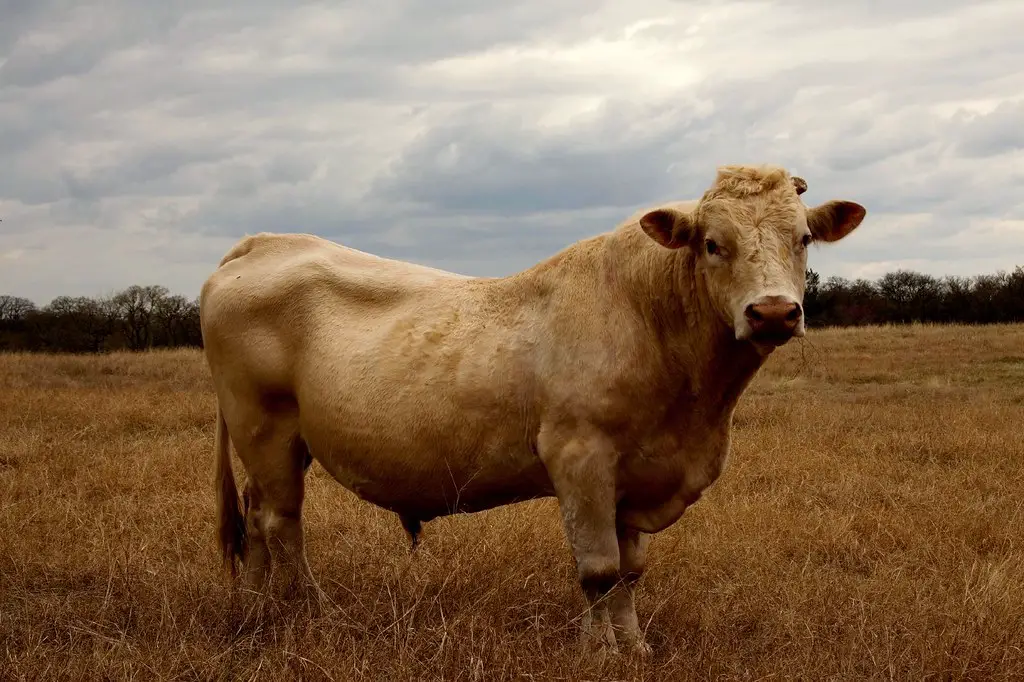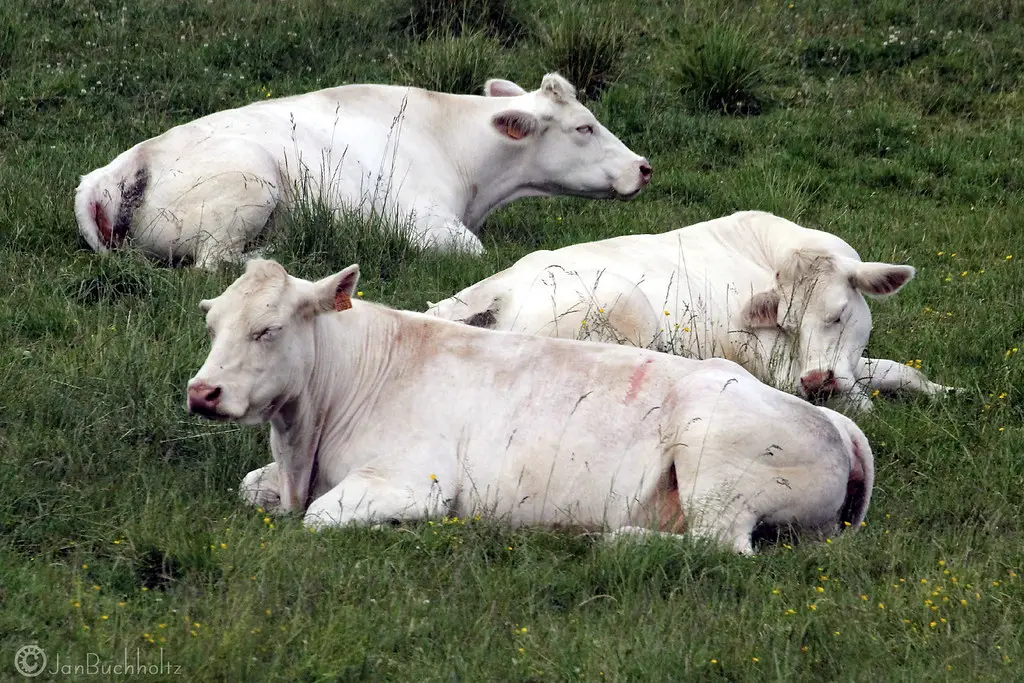
Charolais Cattle! Picture a beef cow that looks more like a weightlifter than a farm animal. That’s the Charolais! This breed, hailing from France, is a powerhouse in the beef industry and famous for its incredible muscle mass. If you’re seeking rapid growth and sheer meat yield, the Charolais deserves a close look. But are these gentle giants the right fit for your operation? Let’s dive in!
Origin Of Charolais Cattle
The Charolais story begins centuries ago in the Charolais region of central France. Farmers in this area prized strong, white cattle for both their draft power and beef. Over time, selective breeding focused on muscle development and meat quality, leading to the impressive Charolais cattle we know today. Their reputation for superior beef spread, and they are now found across the globe.
Characteristics
- Beefy Beauties (Most of the Time): The classic Charolais sports a creamy-white coat, though some red Charolais exist.
- Muscles on Muscles: The most striking feature of the Charolais breed is their incredible muscularity and large size.
- Rapid Growth: They’re known for gaining weight quickly and efficiently, which translates to faster finishing times in beef production.
- Gentle Giants (Usually): While some temperament variation exists, Charolais cattle are generally docile and easy to handle, despite their immense size.
Charolais Cattle: Pros
- Top Tier for Beef Yield: If you’re raising cattle for meat, the Charolais offers an exceptional amount of lean muscle.
- Fast Growth = Efficiency: Their rapid growth can translate to less time and cost for producers before finishing for market.
- Crossbreeding Champs: Charolais genetics are often used to improve carcass quality and growth in other beef breeds.

Charolais Cattle: Cons
- Calving Difficulties: Due to their large calves, assisted birthing might be more common with Charolais cows.
- Feed Needs: Their huge size and rapid growth rate mean these cattle consume more feed than some breeds.
- Less Marbling: Charolais beef is naturally leaner, which some prefer, but it can lack the marbling some favor for optimal tenderness in certain cuts.
Charolais Cattle Facts
- Did you know there’s historical evidence of the breed dating back to the Roman Empire? That’s a long time in beef!
- Some Charolais bulls can reach an astonishing 3000 lbs, showcasing their potential!
Charolais Cattle Weight
- Mature bulls average around 2000-2500 lbs
- Mature cows average around 1200-1800 lbs
Characteristics Table
| Characteristic | Description |
|---|---|
| Average Weight | 1,200 – 1,800 pounds (540 – 820 kilograms) |
| Color | White or creamy white, sometimes with shades of light tan or straw |
| Age | Typically reach maturity around 18-24 months |
| Gestation Period | Approximately 283 days (9.5 months) |
| Calving Ease | Generally good calving ease |
| Temperament | Usually docile but may exhibit higher energy levels compared to Angus |
| Feed Efficiency | Known for efficient feed conversion |
| Adaptability | Adaptable to various climates and environments |
| Lifespan | 12-15 years |
FAQ About Charolais Cattle
- What is special about Charolais cattle? Their incredible muscling, growth efficiency, and size in the beef world.
- Are Charolais cattle aggressive? Generally not, but always treat large livestock with caution and respect.
- Are Charolais cattle good to eat? Yes! Their meat is lean and can be very tender with the right preparation and cooking techniques.
- Are Charolais bigger than Angus? On average, yes, especially Charolais bulls compared to Angus bulls.
- What problems do Charolais have? Primary concerns are calving difficulties (sometimes) and their higher feed needs.

Conclusion
If you’re looking to maximize beef production and have the resources to support large, fast-growing cattle, the Charolais deserves serious consideration. Their impressive muscle development and growth rate make them a top choice for beef producers. While calving challenges and feed needs require careful management, the benefits are clear for those seeking rapid results in the beef industry.
Have you worked with Charolais cattle or tasted their beef? Share your thoughts in the comments below!
